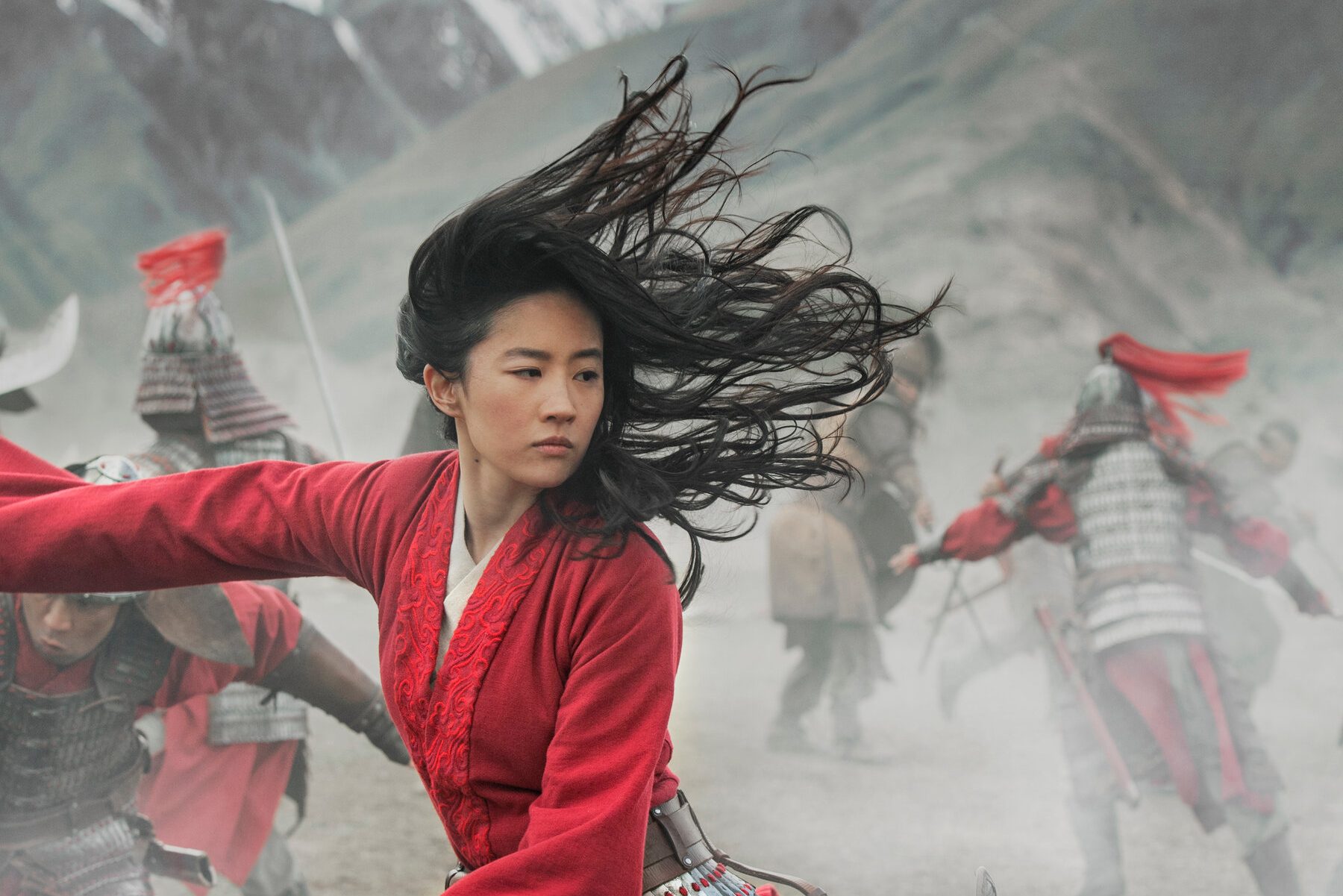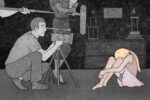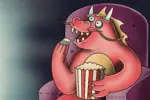“Loyal, brave, and true.” These were the tenets that formed the core of the new live-action “Mulan” that finally released for subscribers of Disney+ in September. And yet, despite the constant repetition of the mantra throughout the film, the words felt empty. The live-action “Mulan” was highly anticipated by many people, myself included. Unfortunately, beyond the beautiful sets, extravagant costume design and phenomenal cast of actors, the film lacked depth, making it a poor follow-up to the original 1998 animated “Mulan.”
The recent “Mulan” is the latest film in a string of live-action remakes that Disney has released over the past few years. Unlike many of the other remakes, however, “Mulan” made monumental changes from the original animated movie in terms of its tone and characters.
In the animated film, Fa Mulan is an only child who lives with her parents and her grandmother. She takes her father’s place in the Chinese Army with the help of one of the family guardians, Mushu, a small, wisecracking dragon, and Cri-Kee, a lucky cricket.
Although she initially struggles with training, she improves to be on par with the other soldiers through her persistence and hard work. She becomes friends with three soldiers, Yao, Ling and Chien-Po, and she also gets close to her captain, Li Shang. Toward the end of the film, Mulan saves China by defeating the villain, Shan Yu — not through sheer fighting abilities, although she has plenty of that, but through her clever thinking and wits.
The animated film resonated with so many people because Mulan could have been anyone. She didn’t have any special talents; she had to work to improve her fighting abilities.
Despite her hard work, Mulan failed over and over again, from being asked to leave the army because she couldn’t keep up, to being abandoned on a mountaintop after her identity was revealed. The movie wasn’t afraid to show her at her lowest points. The struggles that Mulan goes through during the course of the movie are what make her successes so worth watching, because they feel earned.
Now let’s look at the live-action “Mulan,” which sought to be a more culturally and historically accurate film by taking inspiration from the original “Ballad of Mulan.” Here, Mulan’s surname is Hua, the original version of her name.
Hua Mulan lives with her parents and her younger sister, Hua Xiu, the first of many flat characters in the film. A lot could have been done with Xiu’s character; instead, her only purpose is to contrast Mulan’s behavior with that of a proper Chinese woman.
At the onset of the film, a younger Mulan puts on an incredible display of martial arts and acrobatics. Her abilities are explained by her immense quantity of chi, a mysterious power that is never fully explained in the movie but is, apparently, only allowed to be wielded by boys.
In actual Chinese culture, however, chi determines health and vitality and is manipulated by acupuncturists and practitioners of traditional Chinese medicine to return the body to its natural, healthy state. In “Mulan,” it manifests itself in a way like the Force from “Star Wars,” but sexist.
The Disney rendition of chi is confusing and inaccurate. Despite this, it’s still interwoven throughout the movie, ruining their endeavor to make the movie as accurate and authentically Chinese as possible.
The remake also makes a lot of changes to the characters, and not necessarily for the better. In the live-action film, Cri-Kee no longer exists, and Mushu is replaced by a phoenix that swoops in at pivotal moments. While the cinematography is beautiful and the phoenix is more culturally accurate than Mushu, the phoenix doesn’t add much to the movie or the plot.
Meanwhile, Captain Li Shang from the animated movie was replaced by two new characters: Commander Tung, who takes over Shang’s role of training the recruits, and Chen Honghui, a fellow soldier who replaces Shang as Mulan’s love interest.
Yao, Ling and Chien-Po still exist (though the latter is just “Po”), but there are barely any interactions with them. Unlike the animated movie, their characters are undeveloped, and it’s hard to even put a name to a face.
The villain has been split into two characters as well. Instead of Shan Yu, the villains are Böri Khan and Xianniang, a shape-shifting witch.
The result of so many characters is that many of them don’t get enough screen time. Personalities are barely fleshed out. It’s difficult to even pinpoint the villain’s motivations, making the entire plot feel disjointed.
At the core, though, Mulan’s lack of character growth is what makes the entire movie fall flat. Throughout the film, Mulan repeats the mantra, “loyal, brave, and true,” words that are etched on her father’s sword. While Mulan may indeed be loyal, brave and true, the words don’t resonate because they haven’t been earned. It doesn’t help that the live-action Mulan is stoic, cold and hard to relate to.
Unlike her animated counterpart, Hua Mulan is skilled right from the start. Instead of struggling to keep up with everyone else like Fa Mulan, Hua Mulan has to hide her incredible abilities because her father had warned her to keep her chi hidden. There was never a sense of real struggle for Mulan in the live-action film because she was already better than everyone else.
Even when there are hurdles in the way, it feels like Mulan gets over them too easily. When she goes back to warn the army that Böri Khan survived the avalanche, all of her fellow soldiers choose to believe her and come to her defense. Hua Mulan never has to put in much effort to get the results that she wants.
On the other hand, Fa Mulan was completely rebuffed by Shang at the imperial city until the evidence of Shan Yu’s survival presented itself and Mulan proved that she had a strategy.
Mulan’s story has always had elements of female empowerment, but when she’s superpowered and better than everyone else right from the start, that idea is lost. No one can relate to Mulan, so therefore no one can be Mulan. What made the animated movie so great was that you could see yourself in Fa Mulan. The same cannot be said for the live-action version.
If you ever find yourself up for a “Mulan” re-watch, pick the 1998 animated version. While the cinematography of the 2020 live-action film is in a league of its own, it can’t overshadow the countless problems within its story.
















